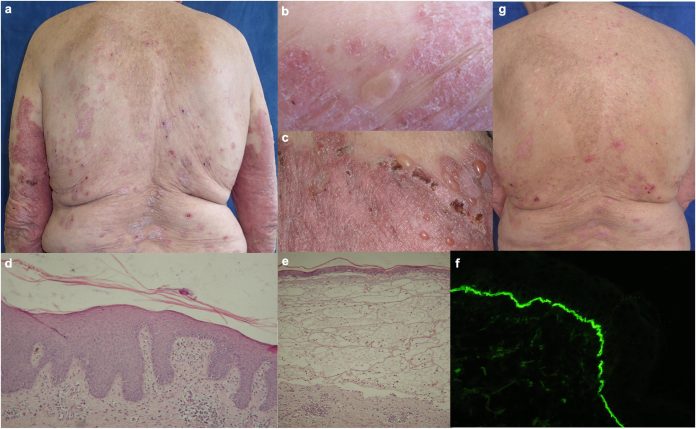Estimated reading time: 0 minutes
Environmental triggers play a crucial role in the development and exacerbation of vesiculobullous skin diseases, a category of disorders characterized by the presence of fluid-filled blisters (vesicles and bullae) on the skin and mucous membranes. While genetic factors are significant, increasing attention is being given to the influence of environmental factors in triggering or worsening these conditions. Understanding this connection is essential for devising effective prevention and management strategies for vesiculobullous skin diseases.
Common Environmental Triggers
1. Infections: Specific viral and bacterial infections can act as triggers for vesiculobullous diseases. For instance, Herpes Simplex Virus infection is known to provoke Erythema Multiforme, a type of vesiculobullous reaction.
2. Medications: Drug-induced vesiculobullous reactions are well-documented. Medications such as antibiotics (like penicillin), NSAIDs, and diuretics can induce reactions resembling pemphigus or pemphigoid.
3. Sun Exposure: UV radiation can exacerbate or trigger certain vesiculobullous diseases, such as Dermatitis Herpetiformis and specific forms of Pemphigus.
4. Chemicals and Toxins: Exposure to particular chemicals, including pesticides and industrial substances, has been associated with the development of vesiculobullous diseases.
5. Dietary Factors: In certain conditions like Dermatitis Herpetiformis, specific dietary components (particularly gluten) are recognized triggers.
6. Stress: Psychological and physical stress can worsen various dermatological conditions, including vesiculobullous diseases.
Mechanisms of Triggering
The precise mechanisms through which these environmental factors trigger vesiculobullous skin diseases are intricate and vary depending on the condition. In general, these triggers can directly harm the skin, leading to an inflammatory response, or they may disrupt the functioning of the immune system, inciting autoantibodies against skin components.
Prevention and Management Strategies
1. Avoidance of Known Triggers: Identifying and steering clear of personal triggers is a crucial step in managing vesiculobullous diseases. This includes specific medications, foods, or environmental factors.
2. Protection from Sun Exposure: The use of sunscreens and protective clothing can assist in managing conditions worsened by UV light.
3. Stress Management: Techniques such as relaxation therapies, mindfulness, and counseling can be beneficial in managing stress-related exacerbations.
4. Regular Monitoring for Infections: Prompt treatment of infections can prevent potential triggering of vesiculobullous reactions.
5. Dietary Adjustments: For conditions like Dermatitis Herpetiformis, adherence to a gluten-free diet is essential.
Conclusion
The association between environmental factors and the onset or exacerbation of vesiculobullous skin diseases highlights the necessity for a comprehensive approach to treatment and management. A grasp of individual triggers and the mechanisms of disease can lead to more effective preventive measures and an enhanced quality of life for patients. As research continues to delve into the intricacies of these conditions, the role of environmental factors remains a pivotal focus area for the development of targeted therapeutic interventions.
Related-
Know More About Ayurveda Treatment For skin Dermatology.
GET IN TOUCH


Recent comments